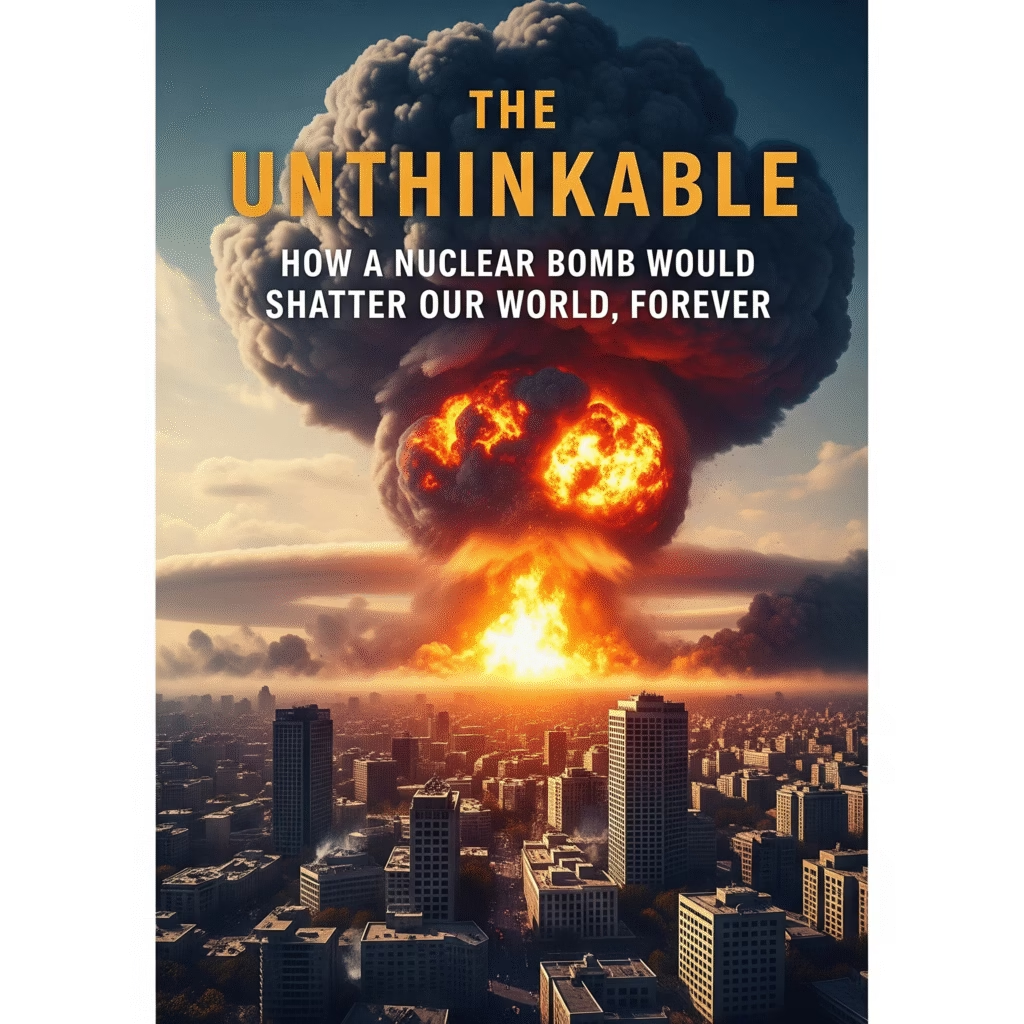The very mention of a nuclear bomb sends shivers down the spine, and for good reason. It’s not just another weapon; it’s an apocalypse in a casing, harnessing the raw, terrifying power of the atom. Unlike anything else in humanity’s arsenal, a single nuclear bomb doesn’t just destroy; it unravels the very fabric of society, leaving behind a legacy of instant annihilation, prolonged suffering, and environmental devastation that could last for centuries. This isn’t a hypothetical threat from a distant past; it’s a stark reality that demands our complete understanding of its unparalleled destructive potential.
Understanding the Atomic Fury: How a Nuclear Bomb Works
To grasp the scale of destruction, it helps to understand the science behind these terrifying devices. At their core, nuclear bombs unleash energy by manipulating the nucleus of an atom – either splitting it apart or fusing it.
- Fission Bombs (Atomic Bombs): These are the “original” nuclear weapons, like those dropped on Hiroshima and Nagasaki. They work by splitting the nuclei of heavy, unstable atoms, typically Uranium-235 or Plutonium-239. When a tiny neutron hits one of these atoms, it splits, releasing a tremendous burst of energy and, crucially, more neutrons. These new neutrons then collide with other nearby atoms, causing them to split in turn, creating a rapid and uncontrollable chain reaction. This exponential release of energy in mere microseconds is what generates the enormous explosion, measured in kilotons (thousands of tons of TNT).
- Fusion Bombs (Hydrogen Bombs or Thermonuclear Bombs): These are the true behemoths of nuclear weaponry, far more powerful than fission bombs. They operate on the principle of fusing lighter atomic nuclei – usually isotopes of hydrogen like deuterium and tritium – to form heavier ones. This process, the same one that powers our sun, releases even more energy than fission. However, to initiate fusion, you need incredibly high temperatures and pressures – hotter than the sun’s core! To achieve this, a smaller fission bomb is actually used as a “trigger.” The explosion of the fission bomb creates the extreme conditions necessary to ignite the fusion reaction, leading to a thermonuclear explosion measured in megatons (millions of tons of TNT).

The Immediate Nightmare: When a Nuclear Bomb Strikes
The moment of detonation is a sequence of horrifying, cascading events that unfold in seconds, obliterating everything in their path:
- The Blinding Flash and Incinerating Heat: The first thing you’d see is a flash brighter than a thousand suns, instantly followed by an unimaginably intense wave of thermal radiation. Close to ground zero, temperatures reach millions of degrees, instantly vaporizing everything – people, buildings, trees. Further out, it causes severe, even fatal, third-degree burns to anyone exposed, melts glass, and ignites everything flammable. These individual fires quickly coalesce into massive, churning firestorms, consuming entire cities and creating their own devastating winds.
- The Deafening Blast Wave: Immediately after the heat, a colossal shockwave ripples outwards at supersonic speeds, carrying immense pressure. It flattens buildings, rips apart infrastructure, and causes catastrophic damage miles away from the detonation point. Concrete structures turn to dust, vehicles are tossed like toys, and the force alone can cause severe internal injuries, ruptured organs, and death to anyone caught in its path.
- The Silent Killer: Initial Radiation: A burst of highly penetrating gamma rays and neutrons is released at the moment of explosion. This invisible radiation travels quickly, affecting anyone within its reach. Exposure leads to Acute Radiation Syndrome (ARS), a horrific illness with symptoms like nausea, vomiting, hair loss, fever, internal bleeding, and a severely compromised immune system, often resulting in death within days or weeks, even for those who survived the blast and heat.
- Infrastructure Collapse and Zero Response: Roads become impassable, bridges are destroyed, communication networks go dead, and power grids utterly fail. Hospitals, fire stations, and emergency services are themselves obliterated. In the face of such overwhelming destruction, any organized first response becomes completely impossible. There is no help coming.
- Humanitarian Catastrophe Beyond Imagination: Survivors would face a living hell of overwhelming injuries, severe burns, and radiation sickness, all without access to medical care, clean water, or shelter. Millions would be instantly displaced, creating a refugee crisis of unprecedented scale, with nowhere to go and no one to provide aid.
- The Electromagnetic Pulse (EMP): A large nuclear explosion, particularly one detonated at high altitude, can generate an Electromagnetic Pulse. This surge of electromagnetic energy can damage or destroy unshielded electronic devices over vast regions, potentially crippling modern technology. Your phone, computer, car, and the entire electrical grid could be rendered useless, plunging wide swathes of society back into a pre-industrial age, compounding the humanitarian disaster.
The Lingering Horror: Long-Term Global Impacts
Even for those far from the blast, or for future generations, the long-term consequences of a nuclear exchange are chilling and potentially irreversible:
- Radioactive Fallout: The Invisible Threat: After the initial blast, enormous amounts of radioactive dust, debris, and fission products are sucked high into the atmosphere. This deadly material then falls back to Earth over hours, days, or weeks, contaminating everything in its path: soil, water sources, air, and food chains. Exposure to fallout leads to a significantly increased risk of various cancers (leukemia, thyroid, bone, etc.), birth defects, and long-term genetic damage across generations, making vast areas uninhabitable for decades or centuries.
- Environmental Devastation and Nuclear Winter/Famine: This is perhaps the most globally terrifying long-term consequence. Even a limited regional nuclear exchange could inject enough soot and smoke from the firestorms into the upper atmosphere to block sunlight for years. This would cause a dramatic and prolonged drop in global temperatures – a “nuclear winter.” Photosynthesis would plummet, leading to widespread and catastrophic crop failures worldwide. This would trigger a global famine that could threaten the lives of billions, far more than the initial blasts. Ecosystems would collapse, and plant and animal life would struggle to survive in the drastically altered climate.
- Complete Societal Breakdown: The sheer scale of death, destruction, environmental contamination, and breakdown of all vital infrastructure would shatter social order. Governments would cease to function, economic systems would collapse, and basic human services would vanish. Survival would become a brutal, day-to-day struggle for dwindling resources like uncontaminated food and clean water.
- Unimaginable Psychological Trauma: For any survivors, the psychological toll would be immense. Living in a destroyed, contaminated world, grappling with the loss of virtually everyone and everything, and facing an uncertain, bleak future would lead to widespread despair, mental health crises, and a deep loss of hope.
- Diversion of Resources and Perpetual Threat: Even without detonation, the mere existence and maintenance of nuclear arsenals divert vast financial, scientific, and human resources that could otherwise be used to address pressing global challenges like poverty, disease, climate change, and sustainable development.
The very existence and potential use of a nuclear bomb represent the most profound and existential threat to human civilization. It underscores why international efforts for nuclear non-proliferation, arms control, and ultimately, disarmament are not merely political aspirations but an absolute imperative for the survival and future well-being of our world.







